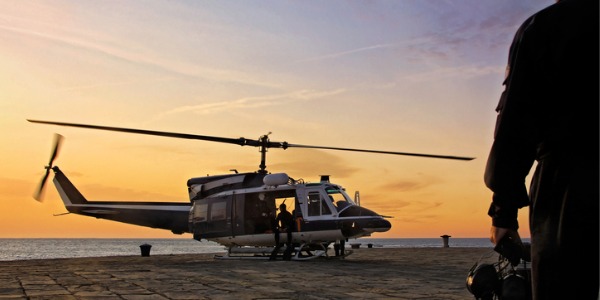What is a Military Air Crew Officer?
A military air crew officer is a highly trained and specialized professional in military aviation. These officers are integral members of the flight crew, serving in various capacities depending on the type of aircraft and the mission requirements. Military air crew officers are responsible for a wide range of tasks, including mission planning, navigation, communication, and coordination of activities during flight missions. They work closely with other crew members, such as pilots, co-pilots, and enlisted personnel, ensuring the safe and efficient operation of the aircraft.
Military air crew officers often have specific roles based on their expertise. For example, they can be navigators responsible for charting flight routes and ensuring the aircraft follows its designated course. They can also serve as weapons systems officers, managing and operating onboard weapons systems, or electronic warfare officers, responsible for countering enemy electronic threats. Additionally, they play a critical role in search and rescue missions, reconnaissance operations, and air-to-air or air-to-ground combat, demonstrating exceptional skills, decision-making abilities, and leadership qualities. These officers undergo rigorous training programs, equipping them with the knowledge and skills necessary to excel in diverse and challenging military flight environments, ensuring the success of various military operations.
What does a Military Air Crew Officer do?

Types of Military Air Crew Officers and Responsibilities
Military air crew officers, as trained professionals integral to the flight crew, have diverse duties and responsibilities. These roles vary based on the type of aircraft and the mission requirements. Here are their key responsibilities in the US military:
- Navigators: Plan and chart flight routes, taking into account weather conditions, airspace restrictions, and mission objectives. Use advanced navigation systems to ensure the aircraft reaches its destination accurately and efficiently.
- Electronic Warfare Officers (EWOs): Operate electronic warfare systems to disrupt enemy radar, communication, and missile systems, enhancing the aircraft's survivability. Gather intelligence by intercepting and analyzing enemy communications and signals.
- Weapon Systems Officers (WSOs): Operate and manage onboard weapons systems, targeting enemy positions, aircraft, or infrastructure during combat missions. Coordinate with other aircraft or ground forces to optimize weapon deployment and effectiveness.
- Tactical Coordinators: Coordinate tactical aspects of the mission, working closely with pilots, navigators, and other crew members. Assist in identifying and engaging targets, as well as gathering reconnaissance data.
- Military Flight Engineers: Monitor and manage various aircraft systems, including engines, fuel, and hydraulics, ensuring optimal performance. Assist in managing emergency situations, such as engine failures or other mechanical issues.
- Airborne Early Warning (AEW) Operators: Operate radar systems on specialized aircraft, providing early warning and surveillance capabilities. Assist in command and control functions, helping coordinate military operations based on gathered intelligence.
- Military Search and Rescue (SAR) Specialists: Lead search and rescue efforts, employing specialized equipment to locate and rescue personnel in distress, including downed pilots or stranded civilians. Provide medical assistance during rescue operations, stabilizing injured individuals for evacuation.
What is the workplace of a Military Air Crew Officer like?
The workplace of military air crew officers is incredibly diverse and can change rapidly based on the type of aircraft they operate, the mission they're assigned, and whether they're stationed on land or aboard naval vessels like aircraft carriers. Here's an overview of what their workplace is like:
Aboard Aircraft: This is the nerve center of the aircraft, where air crew officers work alongside pilots. It's equipped with advanced avionics, controls, and communication systems. Officers use radar displays, navigation instruments, and mission-specific equipment here. In larger aircraft, especially transport planes, air crew officers may have a designated area within the cabin where they coordinate with other crew members or perform specific mission-related tasks.
Military Bases and Installations: Before missions, air crew officers gather in briefing rooms. These rooms are equipped with multimedia facilities, large screens for mission planning, and interactive maps for detailed briefings. After missions, officers convene in debriefing rooms to analyze the mission's outcomes. Here, they review flight data, discuss challenges faced, and strategize for future missions. In military bases, officers work in operations centers where they coordinate flight schedules, monitor aircraft movements, and communicate with other units. Officers often train in flight simulators, realistic replicas of aircraft cockpits. These simulators help them practice various scenarios, enhancing their skills without leaving the ground.
Deployment and Field Operations: During deployments or field operations, officers operate from temporary airfields. These can range from well-established bases to more austere locations, requiring adaptability and resourcefulness. On aircraft carriers, officers work on the flight deck, where aircraft take off and land. This environment is high-paced and demands precise coordination to ensure safe flight operations. In the field, especially during combat or humanitarian missions, officers might work in mobile command centers, equipped with communication systems, intelligence tools, and mission planning resources.
Collaborative Environments: Regardless of location, collaboration is key. Officers work closely with pilots, navigators, enlisted crew, and ground personnel, requiring effective communication and teamwork. In combat or emergency scenarios, officers remain calm under pressure, making split-second decisions in intense environments.
Frequently Asked Questions
Military Related Careers and Degrees
Careers
- Military Tactical Operations Leader
- Military Aircrew Member
- Military Air Crew Officer
- Military Firefighter
- Armored Assault Vehicle Crew Member
- Infantry Soldier
- Navy Officer
- Army Officer
- Air Weapons Specialist
- Aircraft Launch and Recovery Specialist
- Control Center Specialist
- Special Forces Officer
- Artillery Crew Member
- Intelligence Analyst
- Shipmate
- Air Force Officer
Degrees
Military Air Crew Officers are also known as:
Military Aircrew Officer